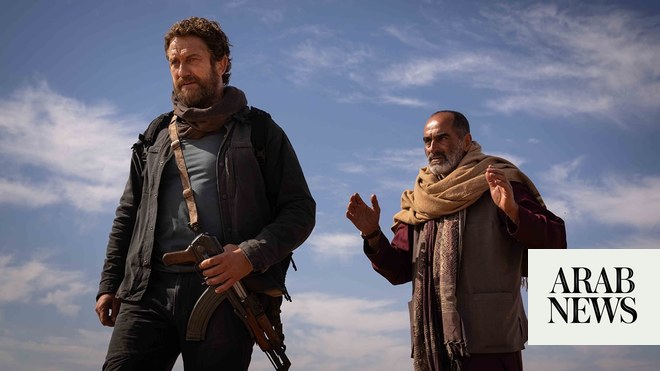
The people who lived in Spairwan village spent two days huddled in their homes, besieged by fighting, before the Taliban came and told them all to leave the area. Qayoom and his family were among 10,000 families pushed out of their homes as government and Taliban forces battled for territory in southern Afghanistan last month.
Qayoom found his new home was to be a couple of large sheets propped up over cold, bare earth, a shelter among many others in a camp for internally displaced people (IDP) on the outskirts of Kandahar city. But the shelter barely checks the icy blasts of bitter winter winds.
“Within the space of a few hours, our village, Spairwan, became the frontline of the fighting between the government and the Taliban,” the father of five told the Guardian. “For two days we couldn’t leave our houses because people were getting shot by both sides. The Taliban captured our village and then told us to leave the area.”
Fighting has surged across Kandahar province since September, sparked by the start of peace talks that have since stalled. The conflict is the closest Taliban fighters have come to taking the provincial city of their former heartland in more than a decade. So far, US air support has played a vital role for the Afghan forces holding ground.
Now, with uncertainty surrounding the US decision to fully withdraw its remaining 2,500 troops by 1 May – as agreed in the US-Taliban peace deal signed in February last year – there are fears the Taliban will continue to escalate attacks, potentially targeting US and Nato forces.
Leaving the village amid the fighting was traumatic for Qayoom, 40, and his family. “The main road to our village was blocked. No way was safe,” he said. “I was extremely frightened.”
They made it to safety with little more than the clothes they were wearing, but now face appalling living conditions and a struggle for food. “I have been back to my village because we just left everything behind, but I discovered that everywhere had been looted. I have farmland there but we’ve had to abandon it,” said Qayoom, who did not wish to give his full name. “We don’t care who is in charge, we just want the fighting to stop.”
In Kandahar province, only 5,500 of the nearly 10,000 displaced families have so far received aid, according to Dost Mohammad Nayab, head of the Kandahar refugee and repatriation department.
Another father in the same camp, Najibullah, described how his young daughter had died in his arms as he and his family left Sangsar village, in the Zhari district, at the end of last year. “I don’t know for certain what killed her but I think it was a heart attack – the stress of what was happening was too much for her,” he said tearfully.
He and his wife, Khatima, buried their daughter at the roadside, instead of in the family plot. Along with their grief, they now have to contend with conditions in the 4,000-sq m camp now occupied by more than 250 families, where they struggle to keep their other five children fed and warm.
One small water tank supplies the entire camp. Mother-of-eight Gulsima, 25, also fled from Spairwan in the Panjwayi district. Her youngest child is six months old. “The fighting started in the morning and by the afternoon, everyone had left the village. We heard the sound of gunfire and heavy weaponry and got out as quickly as we could – we left all of our belongings behind,” she said.
“We have been given sacks of wheat to make bread but even that is in short supply.”
His hands wrapped in big white bandages, Ehsanullah, 19, is a patient at Kandahar’s Mirwais regional hospital.
The teenager’s fingers were blown off by an IED as he searched for his family’s belongings amid the rubble of their home in Tarinkot, in the neighbouring province of Uruzgan. He believes the Taliban planted the bomb.
“When our village came under attack, we moved to another district but we couldn’t live as IDPs, we have no money to pay rent, so we tried to return home,” says Ehsanullah, who gave only one name. “We had six rooms before the airstrike hit our house, but when we returned we discovered only two were still standing.”
The family are now having to make do with what is left of their house.
Mohammad Ismail heads a council of village leaders who meet daily. He said the council is urging the government to support displaced families in desperate need.
“The Taliban are using people’s homes either as checkpoints, offices or as a place to camp out. They do so to stop the government forces from targeting them,” he said.
The Afghan and US forces have been criticised for their part in civilian deaths.
Describing a campaign of destruction carried out by Taliban fighters affecting homes, schools, bridges and roads, Ismail said the insurgents plant IEDs in the areas they capture to slow down government forces – a statement corroborated by civilians and other officials.
“A man in my village was killed by an IED planted on his land. This is happening all over the province,” he said. “It is impossible for people to remain in their homes once the Taliban capture villages. We have eight families who fled the fighting in their village now living in one mosque.”
A pregnant woman who escaped the onslaught in her village was forced to give birth in a derelict building, he said.
“Without support from US troops, I am sure the country will collapse and end up in the hands of whoever wants to lead it,” said Ismail.












